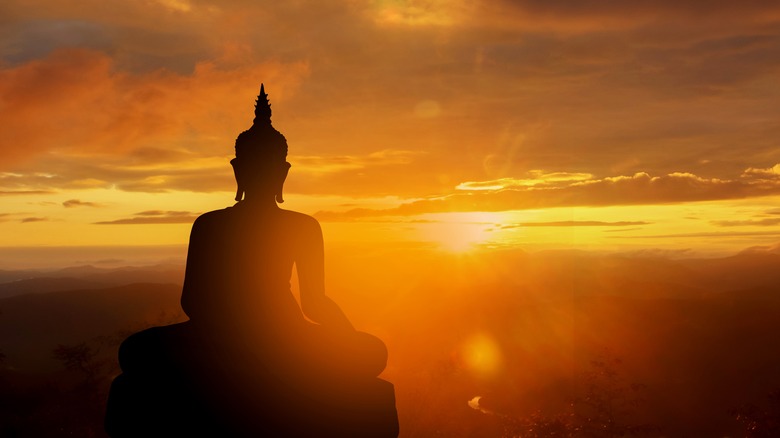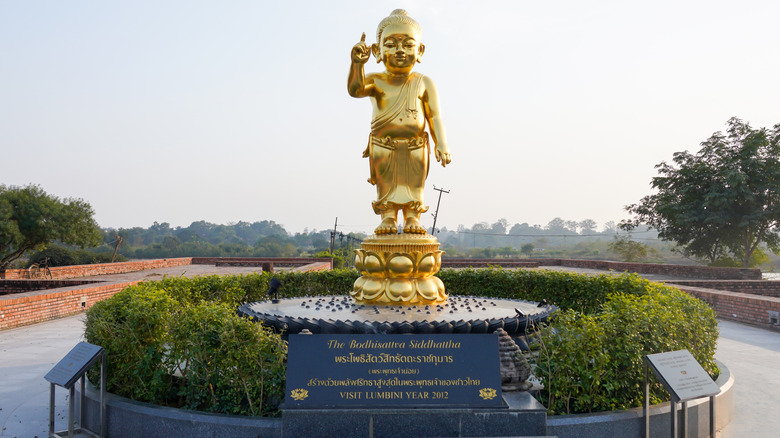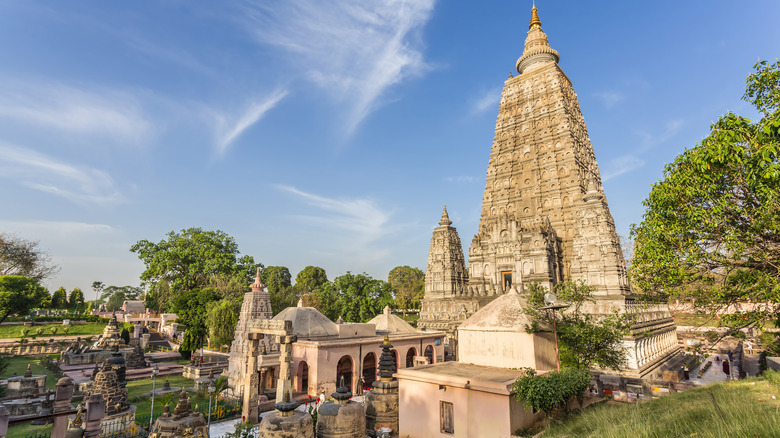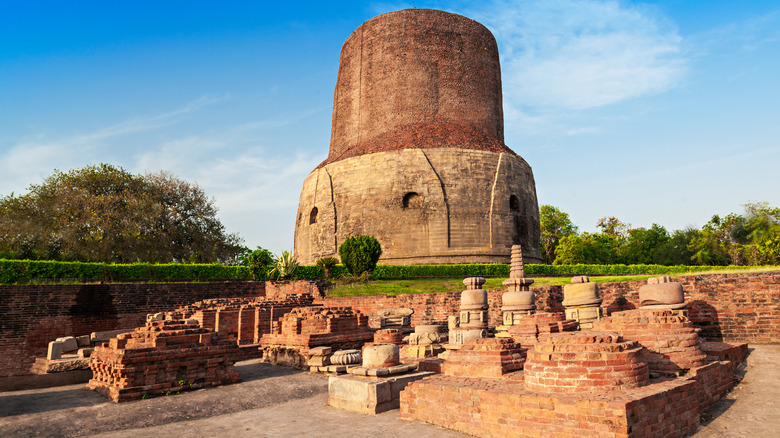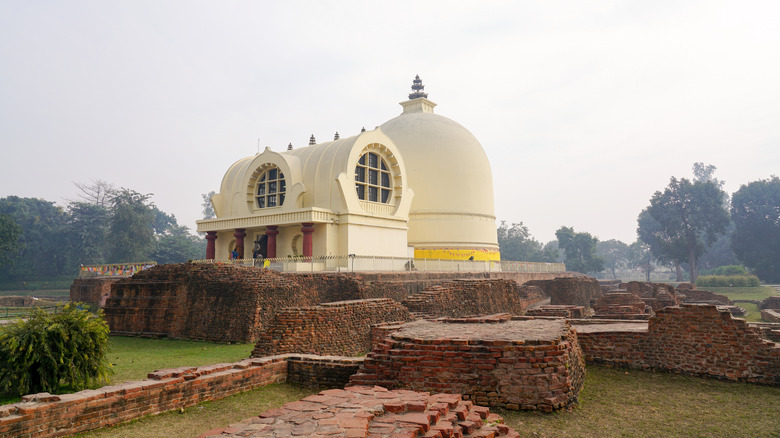What Are The Four Sacred Sites In Buddhism?
Though there are countless religions across the world, there are a handful that are the most prominent: Christianity, Judaism, Islam, Hinduism, and Buddhism. Christianity has the most followers, with around 2.4 billion. However, in countries of eastern and southern Asia — such as China, Thailand, and Japan — Buddhism makes up an overwhelming percentage of the population (per World Population Review).
Buddhism is different from the aforementioned religions because its followers do not worship a god or gods. Its founder, Siddhartha Gautama of India, was disheartened when he saw people struggle in poverty. Therefore, he left his life of luxury for one without material possessions or money. He eventually settled on a life somewhere in between those extremes called "the Middle Way." Through meditation, he believed that he had reached an enlightenment that he called "nirvana." A significant theme across the Buddha's teachings is that everyone's life will contain suffering, which comes from one's desires. However, enlightenment can end one's suffering.
Sacred sites in Buddhism follow the life of the Buddha
There are four sacred sites in Buddhism that follow the life of the Buddha. The Buddha was born into a royal family in Lumbini, a region of present-day Nepal. Emperor Ashoka visited Lumbini as he aimed to spread the Buddha's messages and marked the his birthplace with a pillar (per Original Buddhas). Lumbini is the first sacred site in the chronological life of the Buddha.
It was in Lumbini that the Buddha lived a life of luxury as a prince. His family was part of the Shakya clan in the region. He did not realize that his life was so lavish until he went to the city nearby and saw humans suffering for the first time. This began his lifelong journey to search for meaning. He was on his way to becoming the Buddha (per Incredible India). This was different from his destiny at birth, according to Hinduwebsite.com. His parents assumed that he would become a ruler of the clan in adulthood, and thus they educated him on all that he would need to know to eventually be king. But he clearly had other goals in life.
The most important Buddhist site is Bodhgaya
Perhaps the most important of the sacred sites is Bodhgaya in Eastern India. This is the site that contains the original site of the Bodhi Tree, under which the Buddha achieved enlightenment (per Tricycle). There is a "diamond seat" under the tree called the Vajrasana. Followers believe that Emperor Ashoka put the diamond seat at this location in order to mark the spot wherein the Buddha reached enlightenment through meditation and was liberated.
Bodhgaya also includes the Mahabodhi Temple. UNESCO explains that Emperor Asoka first built the temple in the 3rd century B.C. It stands at 50 meters high. The temple encompasses the Bodhi Tree and its Vajrasana, along with other sacred sites of Buddha's enlightenment. The Lotus Pond outside of the temple is also a sacred site. The Mahabodhi Temple is a prime example of Indian architecture. It was one of the first temples built in present-day India, and though it has undergone maintenance over multiple centuries, its most important structures remain similar to the original.
The site of the Buddha's first teachings is also considered sacred
According to Tricycle, Sarnath is sacred because it is the site at which the Buddha gave his first sermon. His sermon discussed the four noble truths. The first is the existence of suffering in life and in the world. The second is that suffering is caused by desire and ignorance. The third states that suffering ends when one reaches enlightenment (nirvana). The last noble truth lays out the path to enlightenment. The path includes moral conduct, meditation, and wisdom (per PBS).
At Sarnath, the Buddha also chose his disciples to spread his teachings. It was there that Emperor Ashoka built the Ashoka Pillar, which features inscriptions regarding unity among the disciples. The monastery and temple ruins date back over 1,500 years (per Tricycle). The ruins were from monasteries built by the Maha Bodhi Society and are located slightly northeast of Varanasi in India. Varanasi includes pilgrimage sites for Hindus as well, making it a historic location for millions of religious pilgrims.
Kushinagar is the site at which the Buddha died
The fourth sacred site for Buddhists is Kushinagar. It was in this city that the Buddha achieved Final Enlightenment, referred to as Mahaparinirvana. This area is now called the Ramabhar Stupa, which is 15 meters tall. Kushinagar is also where the Buddha died. His body was placed at the Mahaparinirvana Temple (pictured above). This temple and multiple monasteries in the area date from as far back as the 5th century. The city also includes the Kushinagar Museum and temples built in architectural styles such as Vietnamese and Chinese.
Some believe that Buddhism is more of a "way of life" than a religion. Buddhists do not pray to the Buddha as a god in the way that Christians, Muslims, and Hindus do. However, these other religions have sacred sites to which followers make pilgrimages as well, such as Mecca and Jerusalem. Today, there are around 470 million Buddhists around the world (per History).
